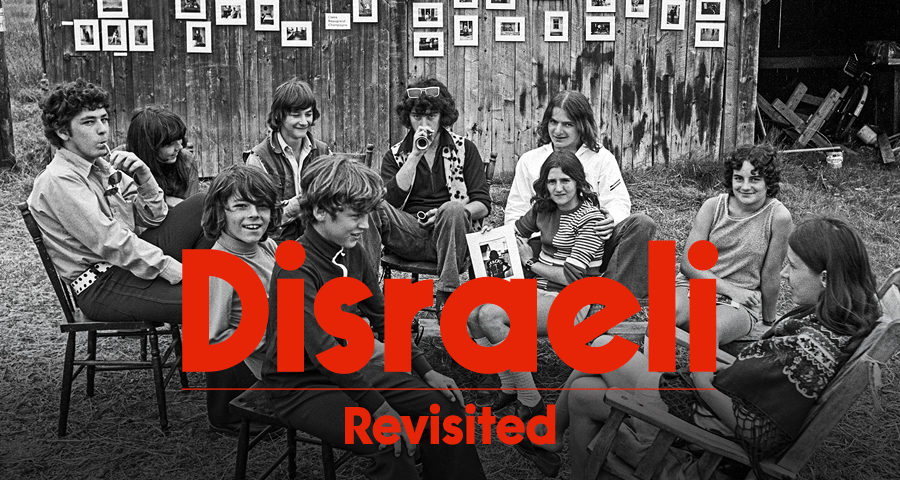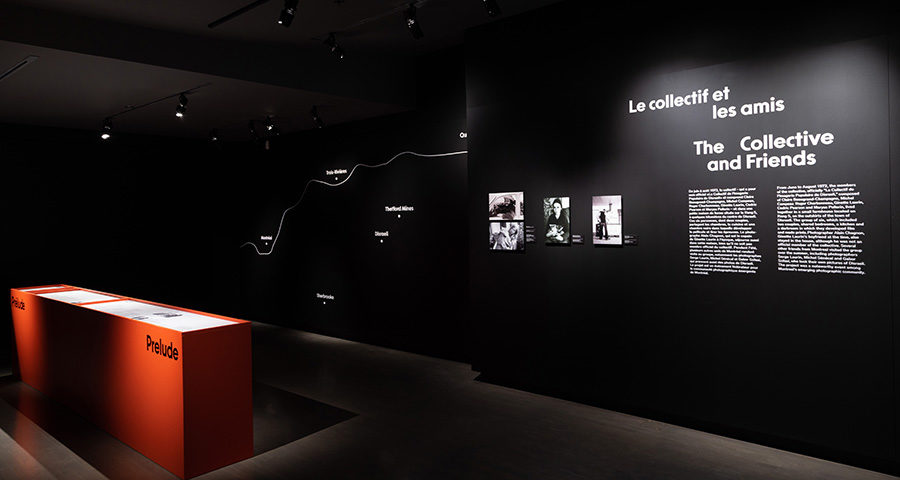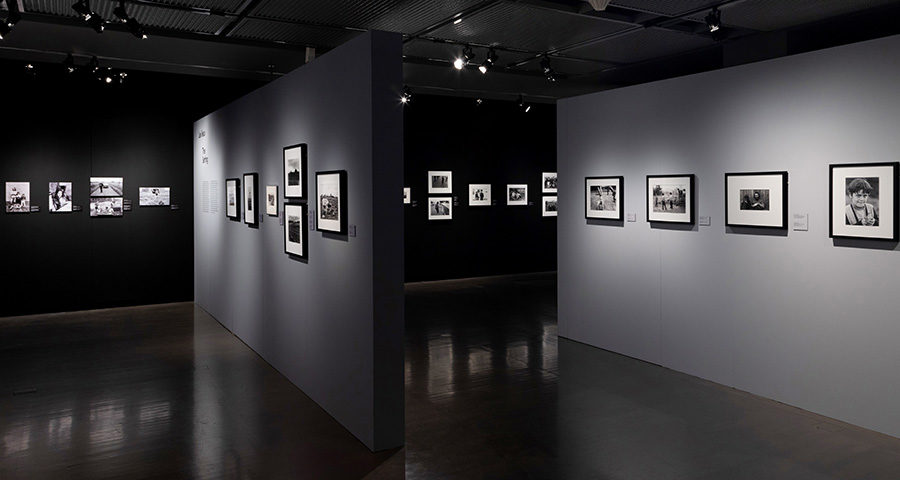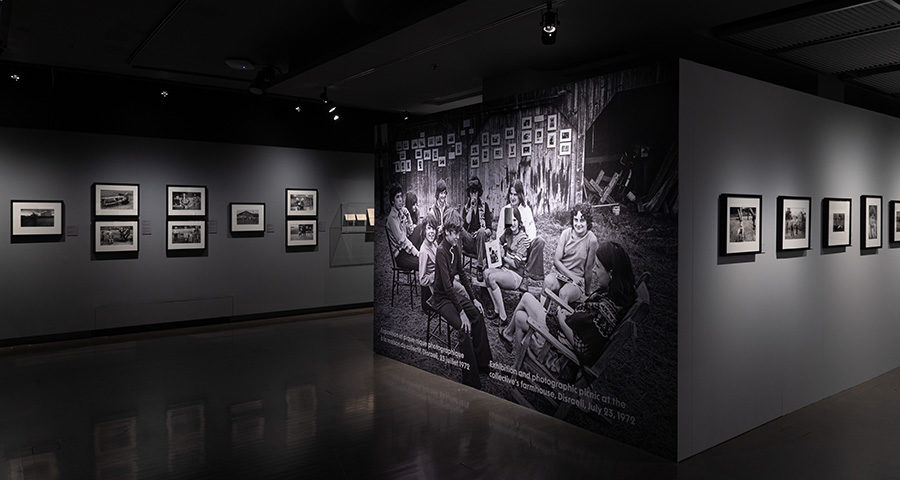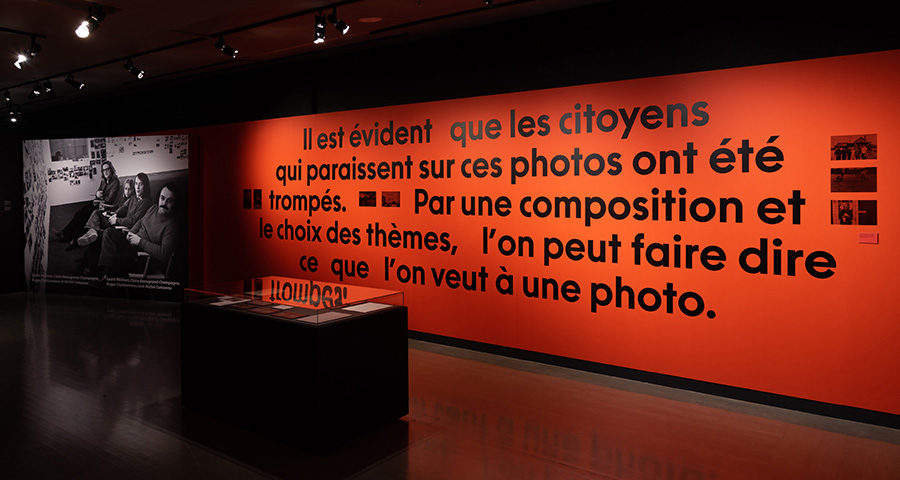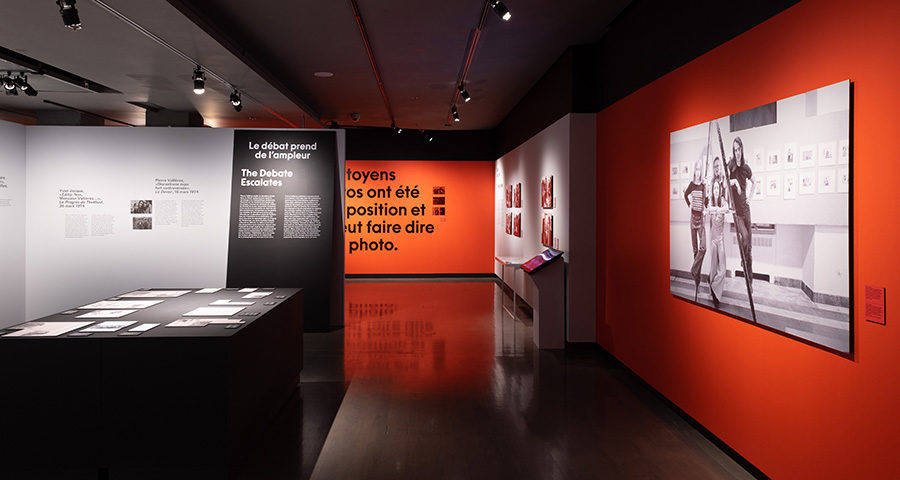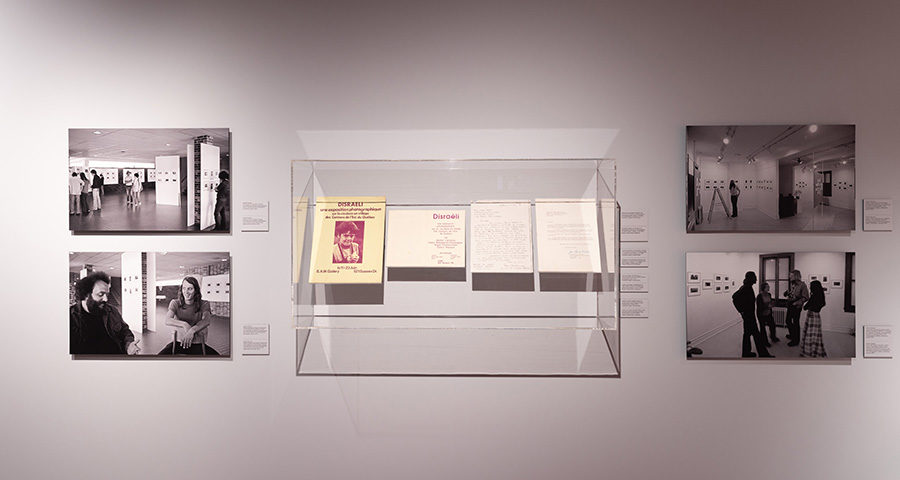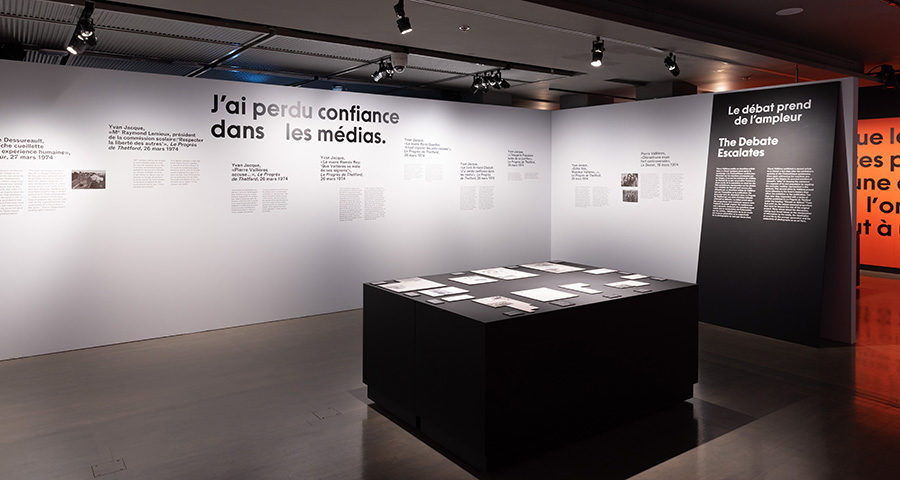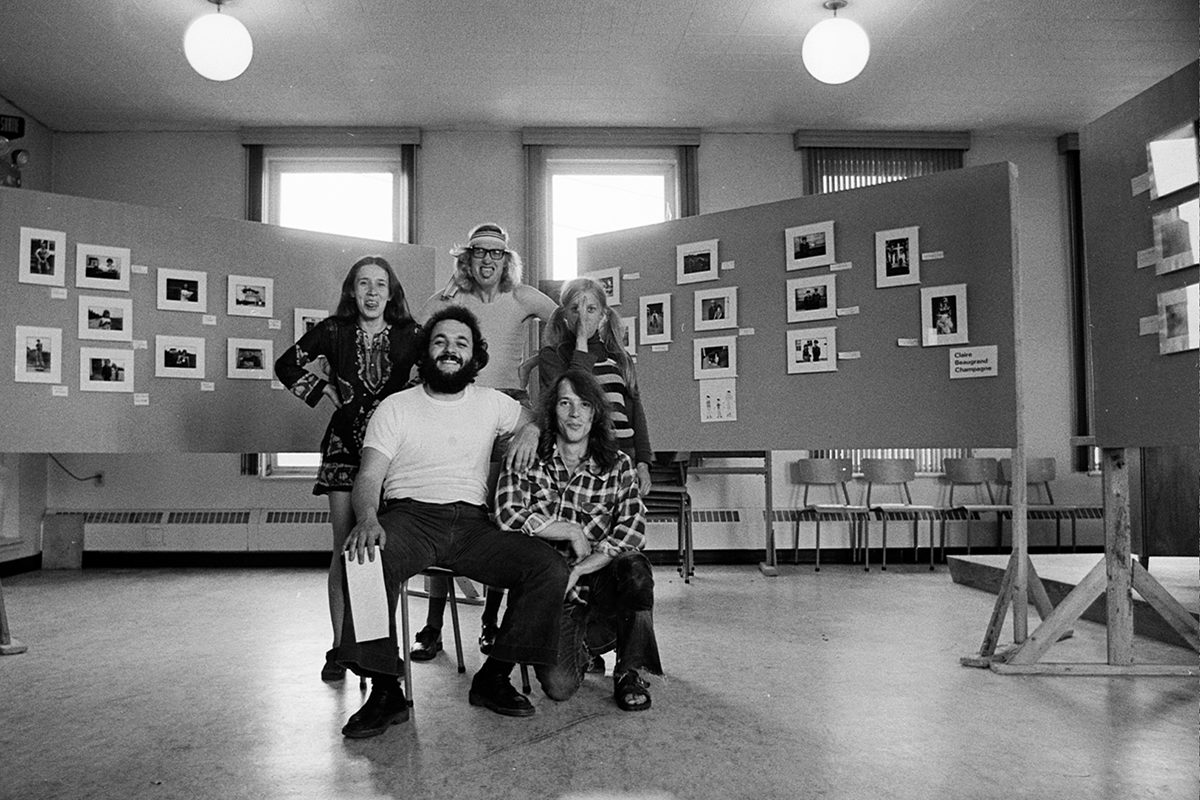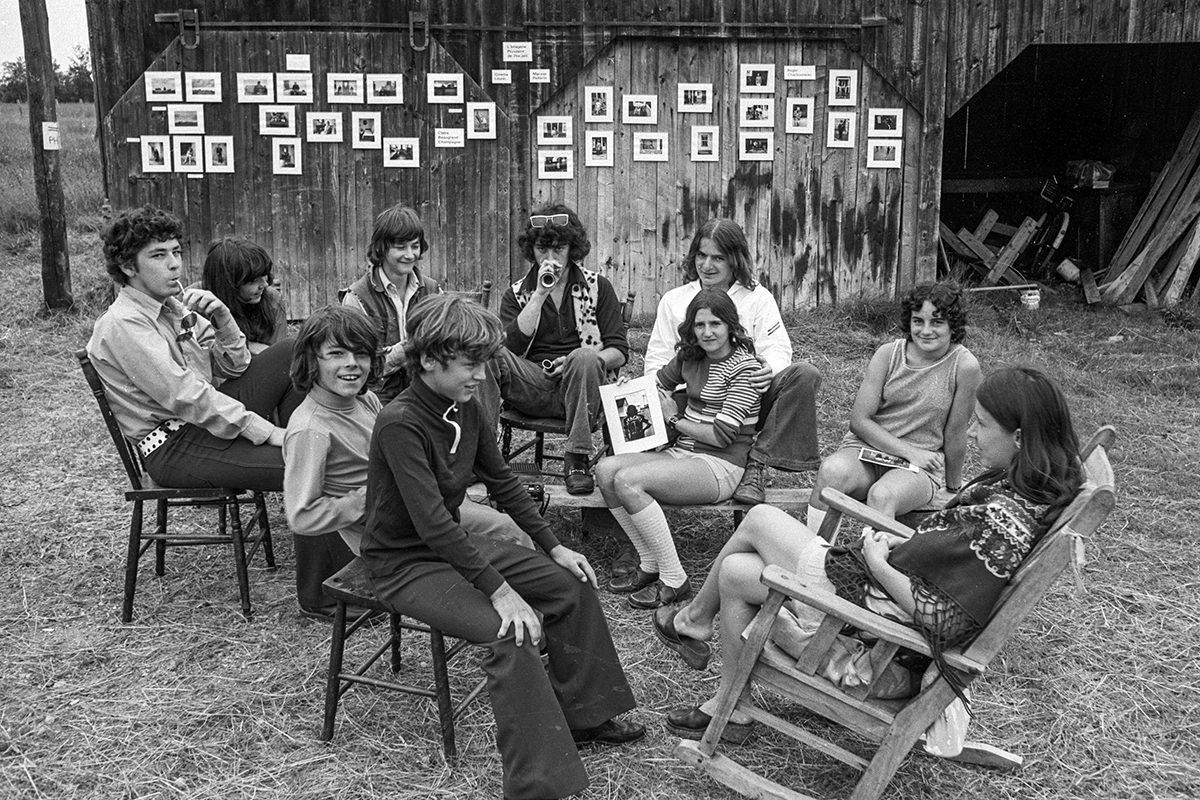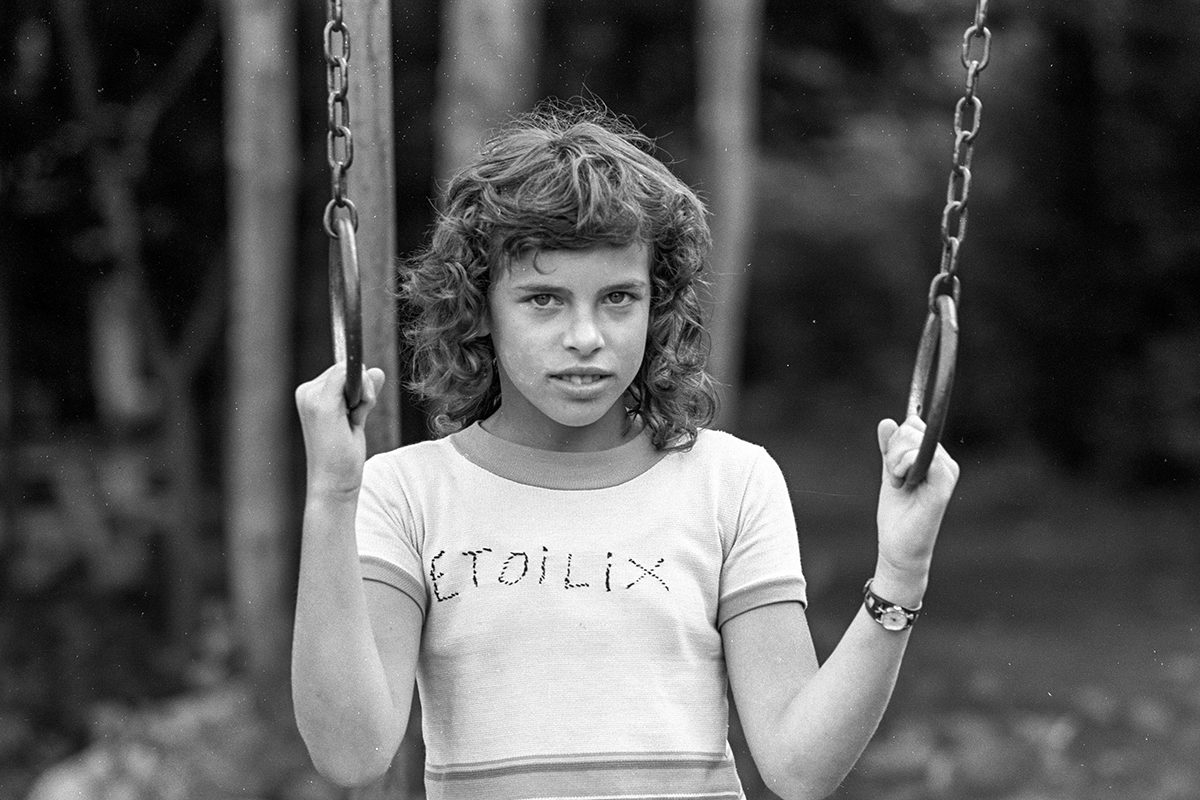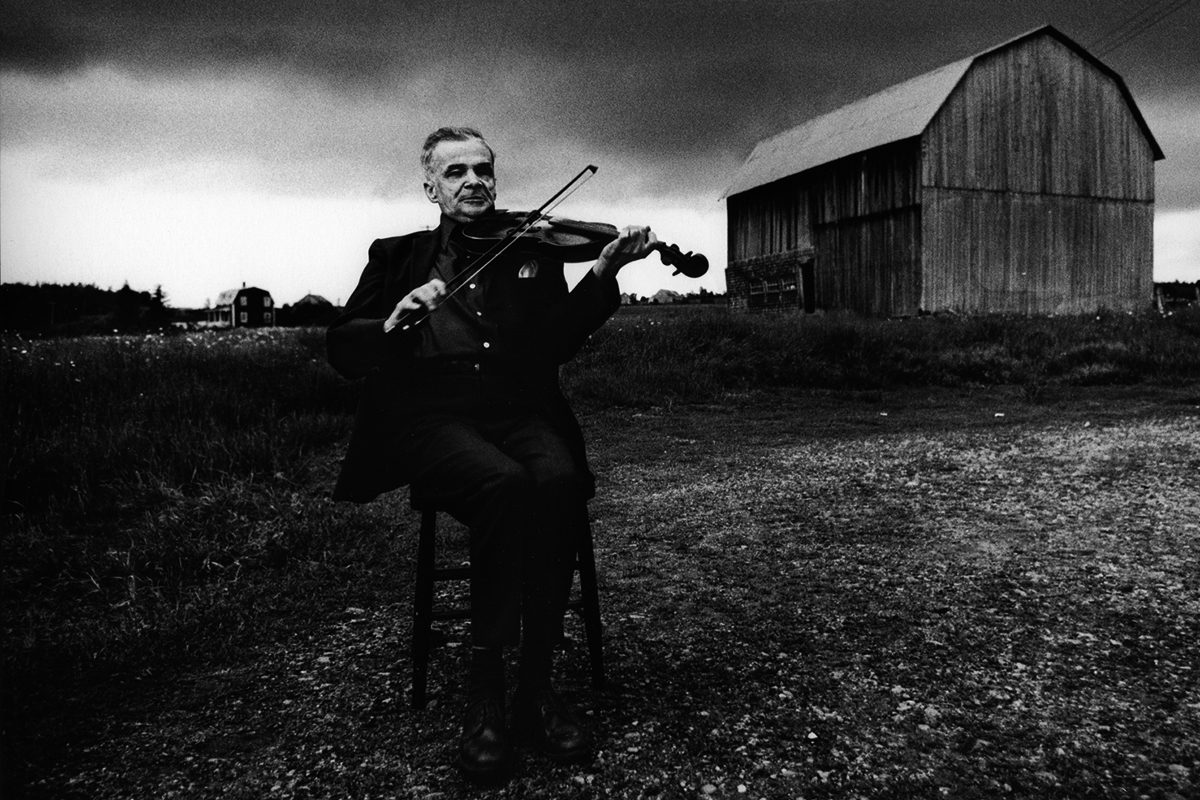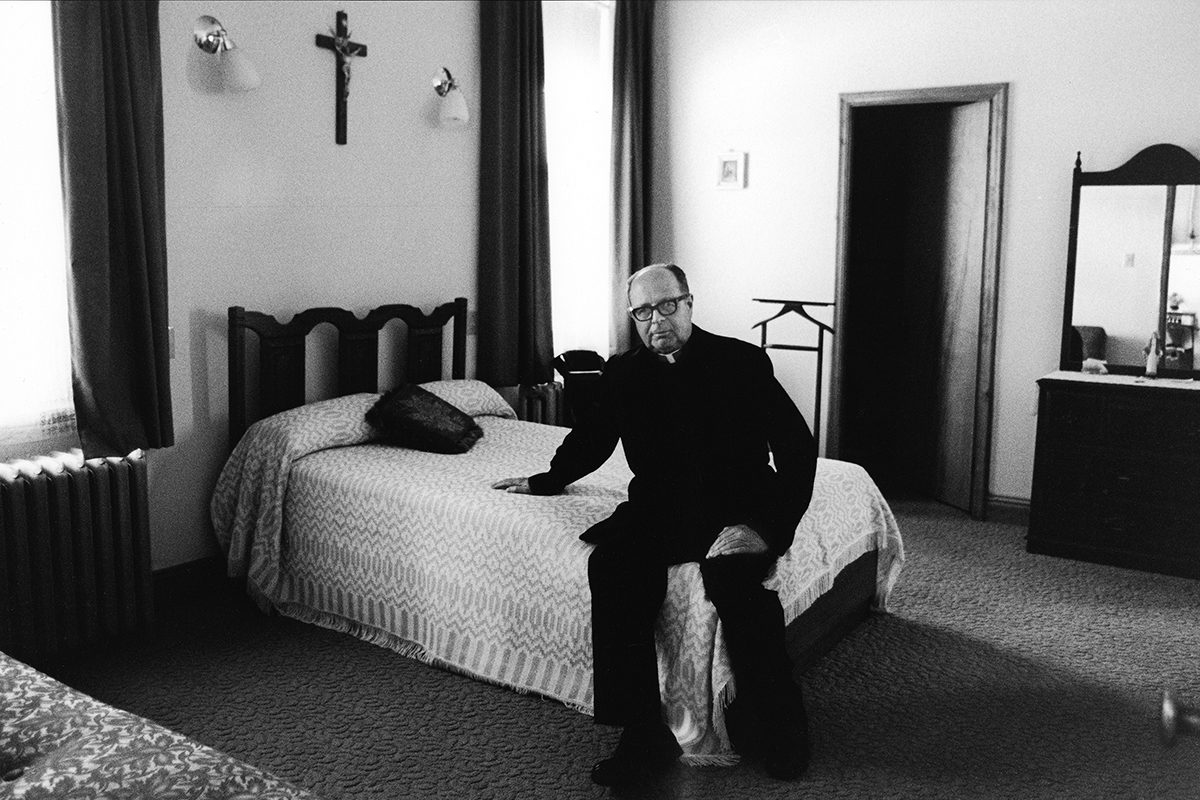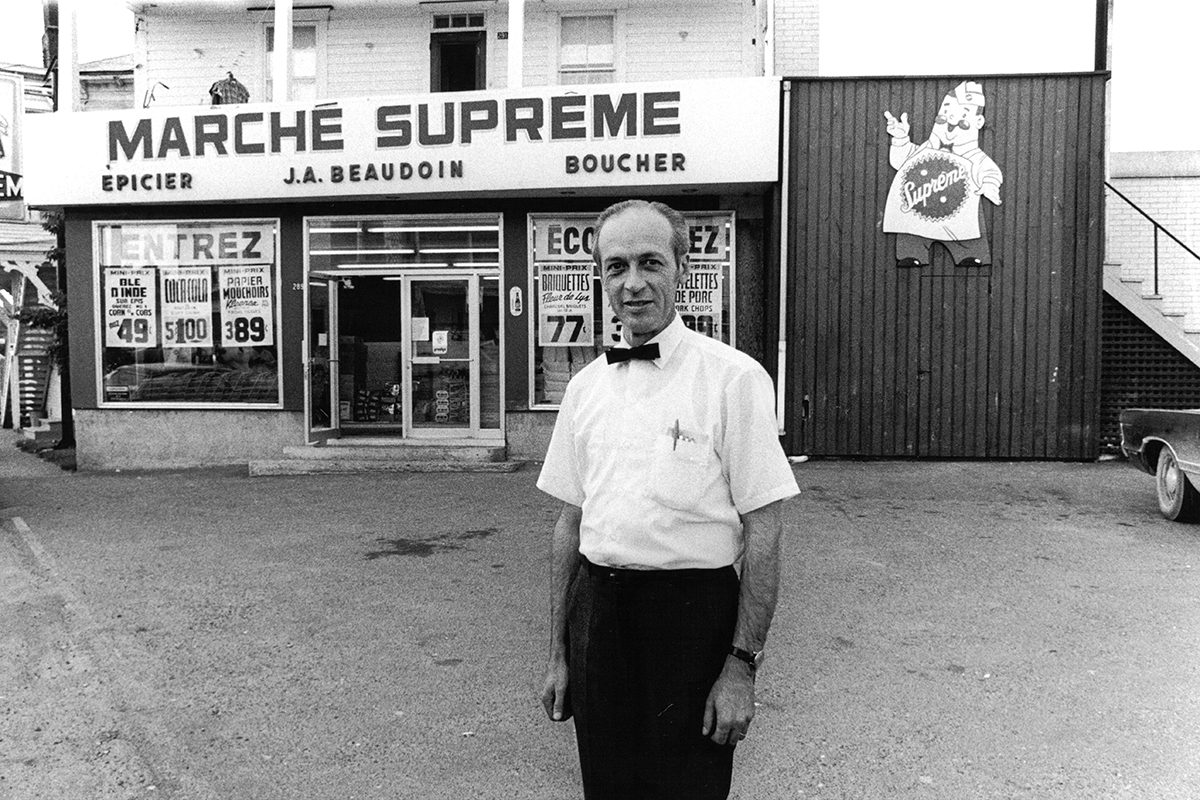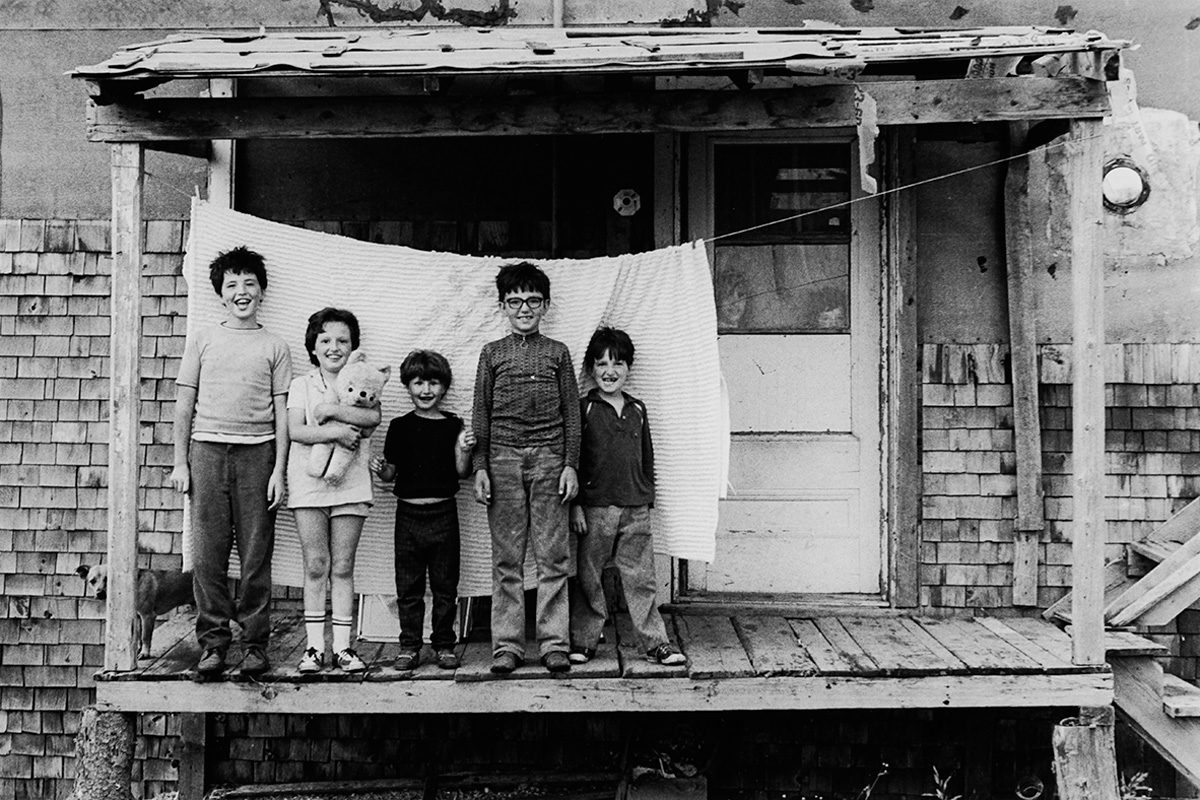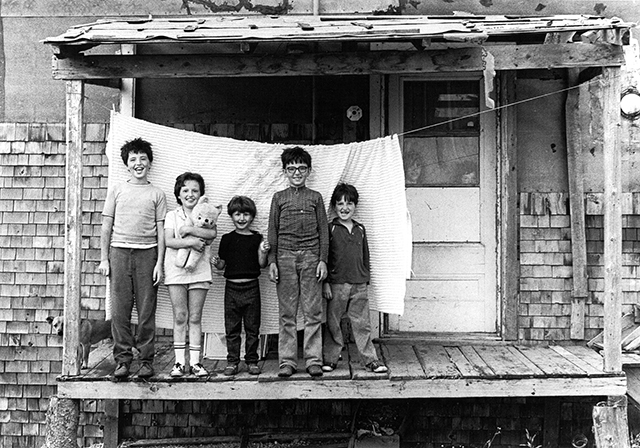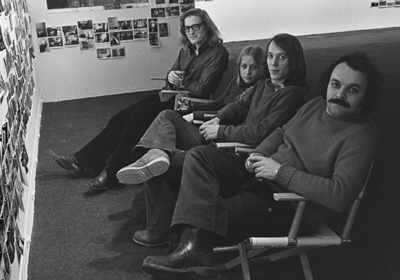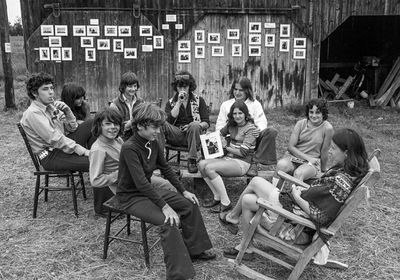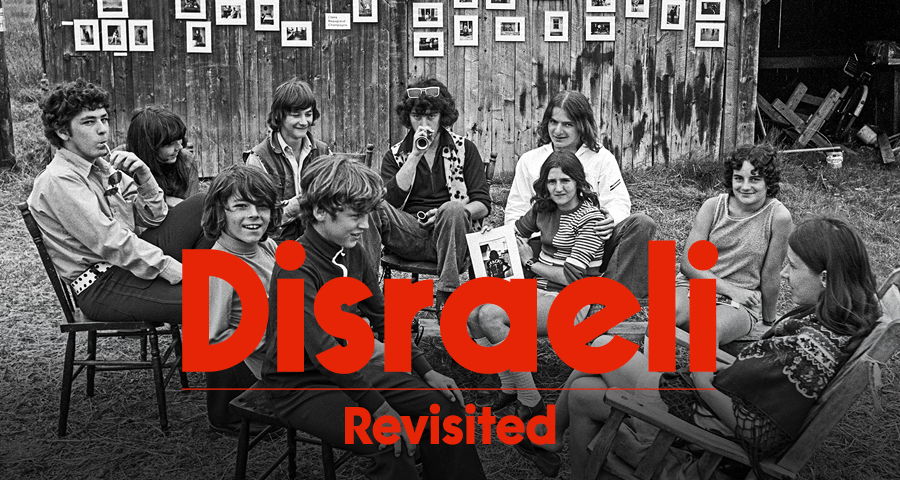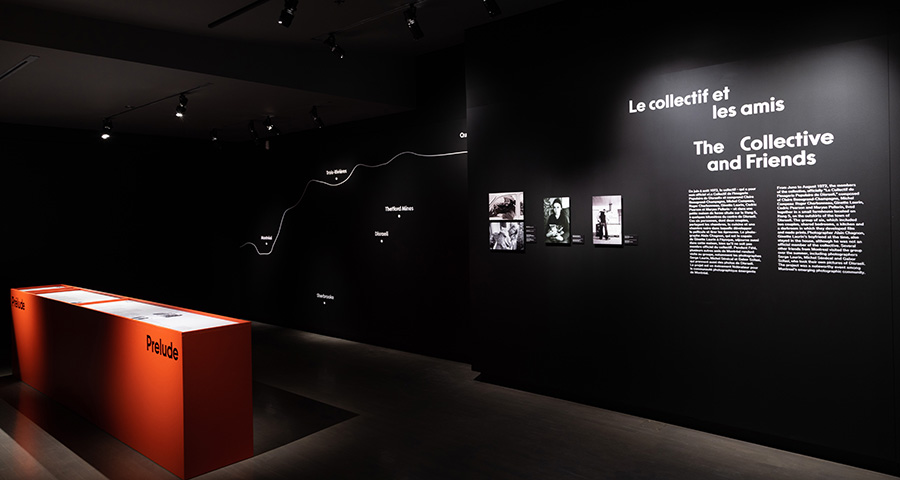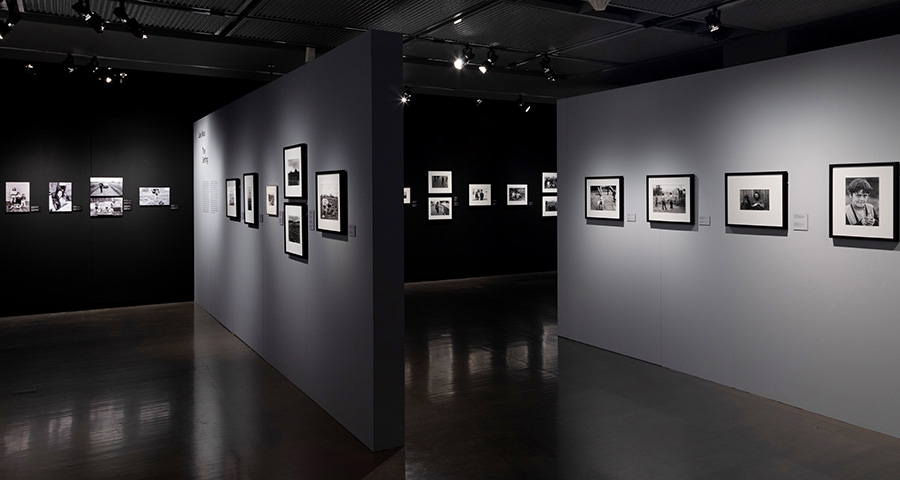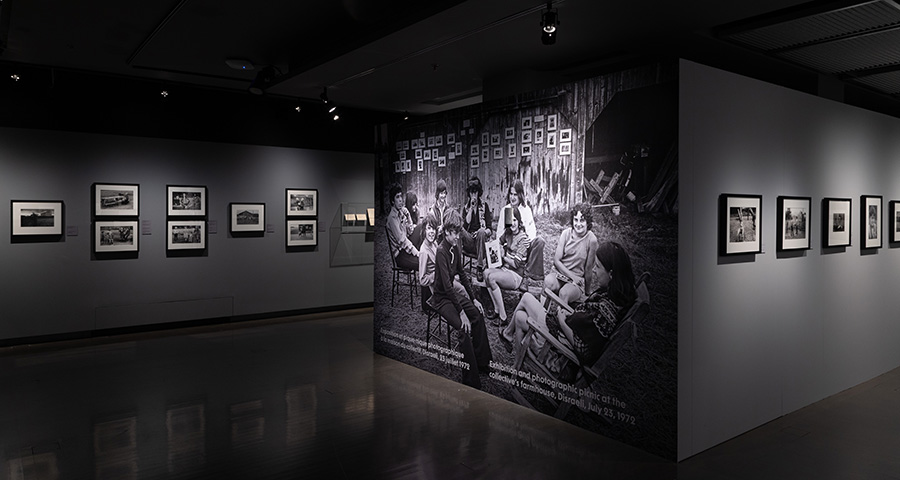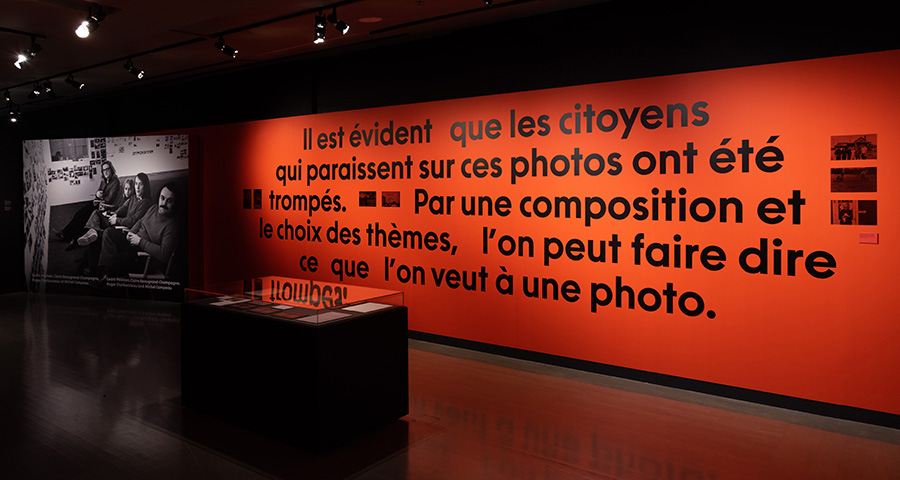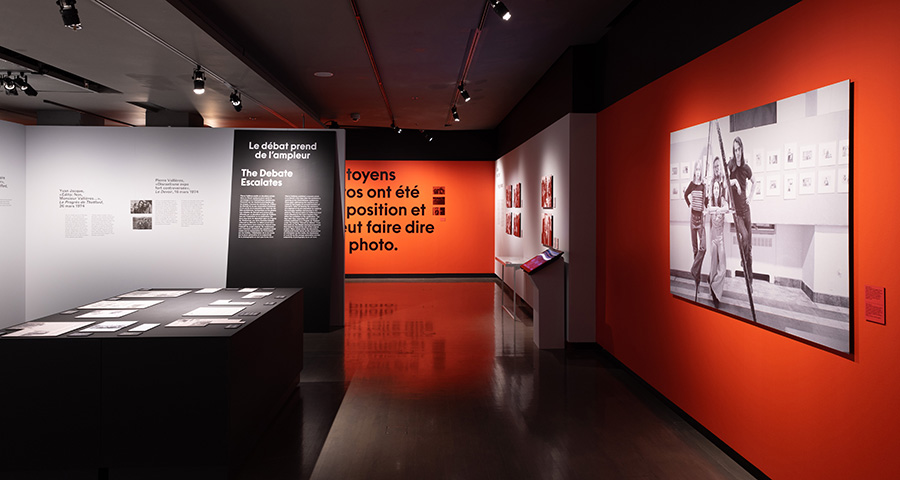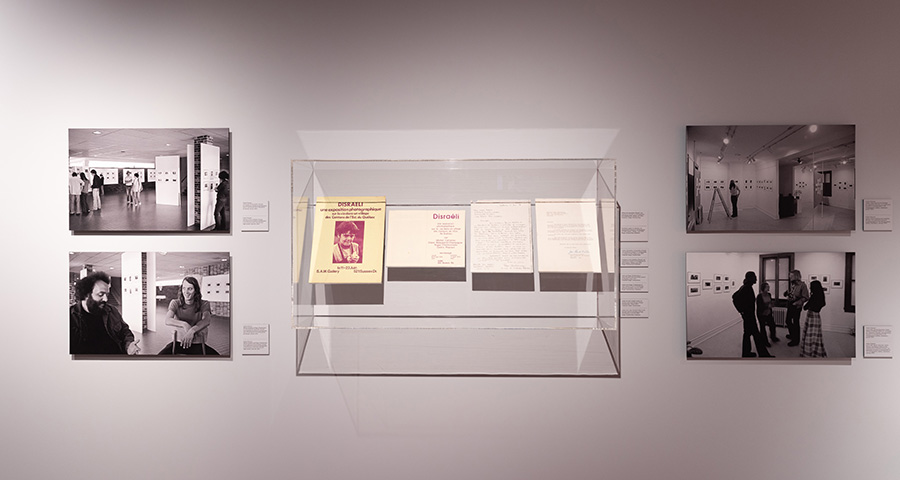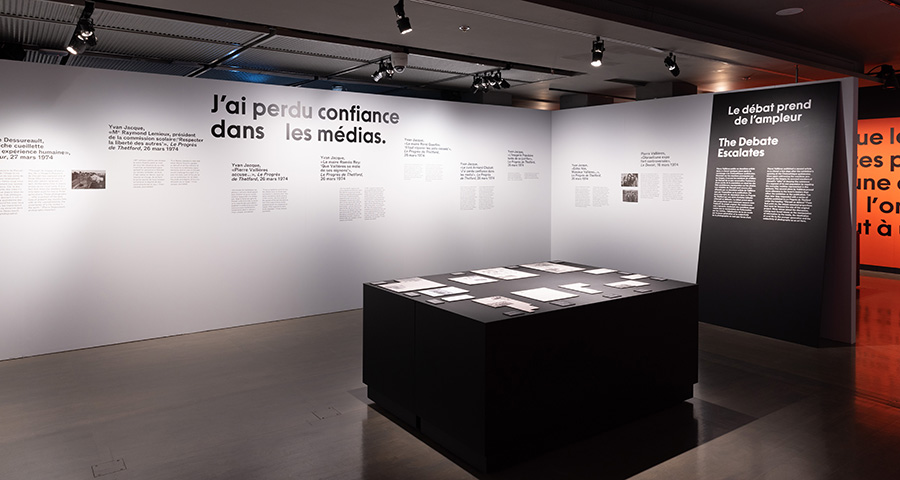Photography Exhibition
Until February 19, 2023
Disraeli Revisited
Chronicle of an Event in Quebec Photography
The exhibition Disraeli Revisited marks the 50th anniversary of a pivotal event in the history of photography in Quebec: the Disraeli project. Produced in collaboration with the project’s four photographers, the exhibition seeks to celebrate, expand and revise the original Disraeli project by bringing together photographs and documents that tell the story from multiple viewpoints.
Through 144 photographs, including over 67 that have never been exhibited before, 44 archival documents and a video, the public is invited to discover the Disraeli project, the topic of heated debate in the 1970s that sparked a deep reflection on the ethics of photographic representation and image rights.
The Disraeli Project
In 1972, a collective of young photographers and researchers—composed of Claire Beaugrand-Champagne, Michel Campeau, Roger Charbonneau and Cedric Pearson, Maryse Pellerin and Ginette Laurin—received a grant from the Opportunities for Youth federal aid program to spend the summer in Disraeli, a town in the Chaudière-Appalaches region. For three months, the group lived among the region’s locals, producing a collaborative photographic portrait of everyday life in a rural Quebec community.
Throughout their stay, they photographed and interviewed locals and developed certain friendships. This closeness made it possible for the photographers to take portraits of their subjects in action or posing nonchalantly in the places where they lived and worked.
The controversy
In the months and years that followed, the group’s photographs were circulated widely in the Quebec printed press, provoking a negative reaction from several influential residents of Disraeli, who claimed the town had been misrepresented by the photographers’ “miserabilist” gaze. What followed was a veritable media storm – the first in Quebec centred on the ethics of photographic representation. For the four photographers, the event marked a turning point in their respective careers.
Previously unpublished photographs and audio recordings
In collaboration with the photographers, exhibition curator Zoë Tousignant, Photography Curator at the McCord Stewart Museum, revisited an imposing body of images and chose to present over sixty previously unpublished photographs, with the goal of giving the public a new perspective on the project.
A series of audio recordings produced by the group’s researchers, Ginette Laurin and Maryse Pellerin, which were thought to have been lost, were recovered while putting together the exhibition. On top of providing a glimpse into the soundscape that surrounded the photography sessions, these recordings are exceptional documents on the history of a period and a place.
Photographers' Biography
Claire Beaugrand-Champagne
Claire Beaugrand-Champagne is Quebec’s first female press photographer. She represents a generation of documentary photographers who, in the 1970s, set out to explore the province’s social milieu. Often working in small groups in specific locations, they defined an era in the history of photography in Quebec.
Claire Beaugrand-Champagne has consistently focussed on social issues. More recently, she has turned her lens on people in her immediate environment, who have become her main subjects. Taking photographs is a way for her to discover a person and often marks the start of a lasting relationship. Out of these warm, sincere moments emerges something out of the ordinary that touches us all.
Her prints, which are small in relation to the current trend in contemporary art, evoke proximity and sharing. The handwritten captions make the person’s name an integral part of the image. It is the photographer’s way of properly acknowledging those who have agreed to share a part of their life with her.
Claire Beaugrand-Champagne has also worked for various organizations, magazines and newspapers, and participated in numerous artistic events. Her photographs, exhibited many times around the world, are part of several Canadian museum collections. Her work constitutes a precious heritage for generations to come.
Michel Campeau
Reflections on existence and creation, Michel Campeau’s work marks the last five decades of contemporary photography. The artist is interested in the aesthetic and conceptual legacy of the material culture of silver photography.
In 1994, Michel Campeau was chosen as the international winner of the Higashikawa Photography Prize in Japan. A retrospective overview entitled Les images volubiles – Travaux photographiques, 1971-1996 was organized by the Canadian Museum of Contemporary Photography in Ottawa in 1996. In 2004, Plein Sud, Centre d’exposition en art actuel in Longueuil presented the exhibition Arborescences. Beauté et paradoxes. The monograph DARKROOM was published in 2007 by Parr/Nazraëli Press, preceded by the publication of excerpts in the New York magazine Aperture. His darkroom work was selected for the New Photography exhibition presented at the New York Photo Festival in Brooklyn in 2008 and as part of the official program of the Rencontres d’Arles in France in 2010.
His research and work has culminated recently with the exhibitions Avant le numérique, presented at the McCord Museum, Montreal in 2018 and The Donkey that Became a Zebra: Darkroom Stories, opening at Fotografie Forum Frankfurt in Frankfurt in 2019. Two publications accompanied these performances, Rudolph Edse. Une autobiographie involontaire and The Donkey that Became a Zebra: Histoires de chambre noire, published by Éditions Loco in Paris, the first in co-publication with the McCord Museum in Montreal. In September 2020, the exhibition Inside the Argentic Darkroom with Digital Camera and Scanner, at the Prospekto Gallery in Vilnius, Lithuania, reiterated the singularity and validity of his artistic acts.
A frequent recipient of research and creation grants, Michel Campeau was awarded the Jean-Paul Riopelle Career Grant by the Conseil des arts et des lettres du Québec in 2009 and was the recipient of the Duke and Duchess of York Prize in 2010 by the Canada Council for the Arts. His work is included in numerous collections in Canada and abroad.
Michel Campeau was born in 1948. He lives and works in Montreal, Quebec, Canada.
Roger Charbonneau
Since his beginnings in the 1970s, Roger Charbonneau has favored documentary photography of a social nature. He became known mainly through photographic series such as his “Quartiers populaires de Montréal” as well as through his collective work with the Groupe d’action photographique, which included Gabor Silazi, Claire Beaugrand-Champagne, Michel Campeau, Pierre Gaudard and Serge Laurin. It is in the line of this type of work that he participated in “Disraeli, une expérience humaine en photographie, 1972”, acquired by the Musée National des Beaux-Arts du Québec in 1999.
Claiming to be influenced by August Sanders and Bruce Davidson, he explores the social fabric through portraiture and urban landscape, concerned above all with respect for his subjects, through whom he seeks to capture the ordinary and the ordinarily lived.
Collections
Montreal Museum of Fine Arts, Musée National des Beaux-Arts du Québec,
Canadian Museum of Contemporary Photography, McCord Stewart Museum,
Conseil des Arts de Montréal, Écomusée du fier monde.
Recent works
• Portraits and interiors (2012 to present)
• Urban social landscape (2012 to present)
• A portrait of the Compagnons de Montréal (2015-2018)
• Pigeon Hill (2014)
Cedric Pearson
Cedric Pearson was born in Great Britain and emigrated to Canada at a very early age. He grew up in Ottawa and made post-secondary studies in architecture. While in Ottawa, he began to work as a photographer and photo editor. In 1975 he moved to Québec where he lived for 25 years.
Cedric’s interest in photography began in early adolescence when he witnessed the elder brother of a school friend fabricating kites and attaching a Brownie camera to take aerial photographs. He procured a folding Kodak camera to make images and another school friend showed him how to develop pictures. His early photography was quite random, but he developed an interest in landscape and nature from a cousin, Freeman Patterson, who was celebrated for his photographs of these subjects. Through Freeman, Cedric was introduced to the National Film Board and in particular to Ron Solomon who was a photo editor in the Stills Division. Ron became a mentor who inspired Cedric to consider social documentary photography and counselled him about the attitude and approach that was desirable for this type of image making.
In 1971, at the National film Board exhibition, Photography 25 – which had included some of his images – Cedric met some photographers from Québec who had established a fledgling practice in social documentary photography. His interest in this work and the new emerging socio-political attitudes of Quebecers led him to invite his new acquaintances to participate in a social documentary photographic project in Québec. Eventually, the Eastern Township town of Disraeli was selected and in the summer of 1972 he, three other photographers and two documentalists carried out the project. The exhibition and publication of photographs from this project were subject to wide and passionate discussion and controversy.
In the following years, Cedric carried out a documentary project concerning the history of cabotage on the St. Lawrence River, which came to an end in 1978 when the last goélettes stop working. Following this project, he embarked on another project concerning the Grand Noirceur of Duplessis and the precursors of the new Québec nationalism. This project provoked him to return to university and study Communications with the goal of making a video about this subject. Unexpected circumstances lead him to move to Rimouski where he eventually returned to his interest in architecture and was involved in a couple of projects. While in Rimouski he also continued postsecondary studies in Marketing.
In 2000 he moved back to Ottawa where he worked as a photographer and taught photography in a variety of venues that include two colleges, a school
of photographic art, an arts council, and private workshops. In recent years he has been involved in the design and publication of books – novels, poetry,
essays and particularly photographic books.
Be an insider!
Subscribe to our newsletter to get the inside scoop on upcoming exhibitions and cultural events.
Subscribe now
